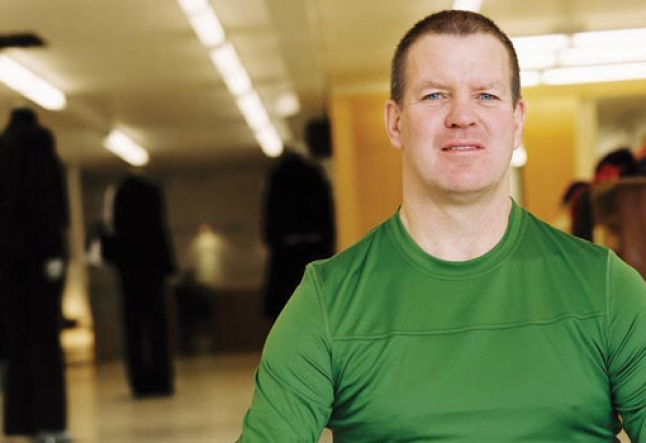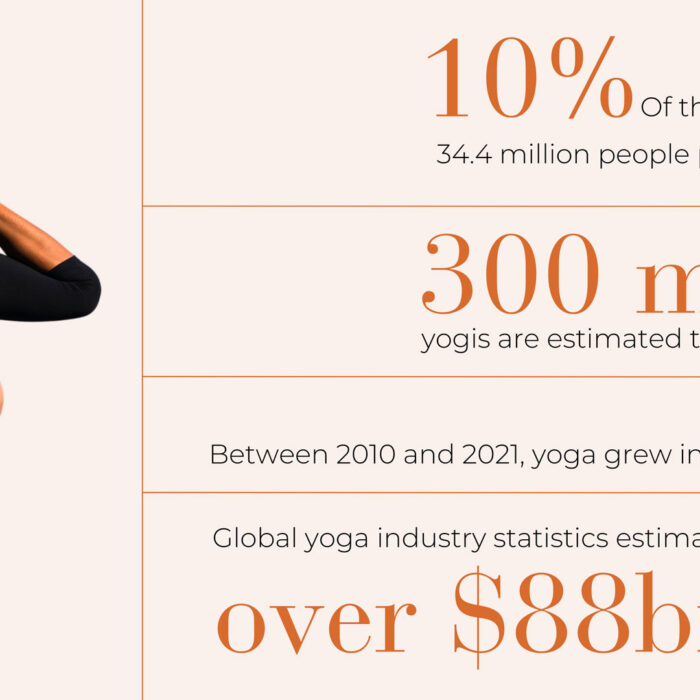How Chip Wilson Built Lululemon into a Yoga Apparel Powerhouse

Chip Wilson: From Westbeach to Lululemon
The Birth of Westbeach and Its Influence
So, here’s the thing: Chip Wilson, father of five boys, founder, and the guy who basically turned Lululemon into a household name, has always had this crazy love for all things athletic.
Imagine someone who’s just always been into high-intensity sports—yeah, that’s Chip.
Back in 1986, he launched Westbeach Snowboard Ltd., a surf, skate, and snowboard business that took the whole West Coast boarding culture and brought it to Canada.
He turned it into a solid success before selling it off to Morrow Snowboards, based out of Portland, OR. Not bad, right?
How Westbeach Paved the Way for Lululemon
Fast forward a bit, Chip found himself unemployed and in serious need of a way to heal after, well, all those intense boarding falls.
So, he tried Ashtanga yoga in Vancouver. “It was really the first yoga class I’d ever heard about,” Chip says. “I went to it and there were six people in the first class, and in 60 days, there were 60 people.”
That kind of growth is wild, and it wasn’t lost on Chip.
He saw how yoga was blowing up and realized there was zero appropriate apparel for it. “I came out of the technical clothing business, and I could see how everyone was sweating in class, clothes binding and just not working, and I thought, ‘I know how to do this.
And this is what I love to do.’” So, Lululemon was born—where yoga and technical clothing came together naturally.
The Vision Behind Lululemon’s Yoga Clothing
Identifying a Gap in the Yoga Apparel Market
Here’s where it gets interesting. In those yoga classes, Chip noticed that most of the women (think 25 to 32-year-olds) were rocking what he called “dumbed-down men’s clothing”—like oversized T-shirts and cutoff sweatpants.
Outside of class, these women had a real sense of style, but they just didn’t have flattering yoga options. “They had been brought up by mothers from the feminist movement, who wore big shoulder pads and dressed like men in the boardrooms.
These daughters, though, didn’t feel like they had to dress like men to be treated equally.”
That’s the gap Chip saw—feminine, functional yoga wear that didn’t make women feel like they had to compromise style for function.
The Inspiration for Lululemon’s First Yoga Clothes
Lululemon started out as a space where people could actually get involved in the design process. Chip wanted real yogis to give feedback about fit and function.
The idea was to create functional and stylish yoga clothes for both men and women. But what he didn’t see coming was the insane demand for yoga clothes that could also work as streetwear. “People were doing yoga, then grabbing coffee, going shopping, heading home…
It gave people way more value than just a pair of Lycra shorts for spinning,” Chip says. It turns out, Lululemon was making something that worked beyond just the yoga studio.
Lululemon’s Unique Approach to Style and Function
Functionality First: Chip Wilson’s Design Philosophy
Of course, even with a killer idea, getting started wasn’t a walk in the park. “In any kind of business, you need the economy of scale,” Chip explains. “You’ve got to make at least 500 of something to get the cost down and make a profit.
I had to have 500 each of six or seven styles. And because I wanted to sell only through our own retail stores, it meant that, for a while, nothing was really moving.
I didn’t want to go wholesale, but I had to—it solved my cash problem even though I didn’t make money right away.”
The Transition from Yoga Apparel to Lifestyle Wear
Running a business means rolling with the punches and being ready to adapt.
Chip originally started with Ashtanga yoga, but quickly learned there were lots of other yoga styles out there—kind of like how snowboarding evolved into downhill, racing, backcountry, etc.
That’s when Chip realized Lululemon had to branch out. For gentler yoga like hatha, they created warm and stretchy garments.
For Bikram, super-light pieces. And for power yoga, they used Lycra and nylon for maximum movement. “Staying on top of how yoga was evolving—that’s what made us successful,” says Chip.
It was never about sticking to one rigid idea; it was about growing with the yoga community.
Overcoming Challenges in Building Lululemon
Scaling Production and Cash Flow Issues
“First off, function is fashion for us,” Chip says. “If it doesn’t work, it’s not worth wearing.
After that, we make sure it looks amazing.” It’s this relentless pursuit of functionality that set Lululemon apart. They wanted nothing less than the highest quality in the yoga market.
The Decision to Wholesale and Its Consequences
The company’s mission statement started out pretty simple—providing components for a longer, healthier, more fun life. But as Lululemon grew, Chip felt that was kind of limiting.
The mission shifted to “moving the world from a place of mediocrity to greatness.” Bold, right? But it worked because every single employee embraced it and took it seriously.
Chip Wilson’s Business Strategy for Success
Flexibility and Evolution in Product Design
Chip knew that to achieve greatness, Lululemon had to start from the ground up—literally—with employee training. “Our training program is extensive—people need 40 hours before they can even start working,” he says. “It’s all about growth and personal responsibility.
It helped us really get to know our people, and we knew we were making a difference.”
Creating Clothing for Different Yoga Styles
The Vancouver HQ doesn’t have many traditional offices—people sit in pods, which really pushes the sense of community that Lululemon is all about.
When Chip got offered a corner office, he hated it. He ended up moving back to the design floor because, in his view, all employees are equal.
And it’s not just talk—every employee, no matter their role, works the store floor once a week to see what’s working and what’s not.
Lululemon’s Culture: Training and Employee Development
The Renowned Employee Training Program
Lululemon’s all about personal growth. Employees are encouraged to work through a library of books that Chip personally selected—books that he thinks are essential for both personal and career growth.
Plus, everyone sets goals—personal, career, and health—for the next two, five, and ten years.
No one’s just coasting at Lululemon; it’s all about striving for more, together.
Goal Setting and Personal Development at Lululemon
They even have a yoga studio at the Vancouver office with classes twice a day—one at noon and one after work.
Employees also get two paid-for classes at community yoga studios. It keeps everyone healthy, connected, and in touch with the yoga world.
And to make commuting more active, most Lululemon stores have showers, encouraging employees to walk or bike to work.
Lululemon’s Community-Centric Approach
The Role of Ambassadors in Brand Building
As of 2013, Lululemon had 211 stores worldwide—places like California, Chicago, New York, Tokyo, and Melbourne. And creating an awesome atmosphere at every store is a huge part of their success.
Walk into a Lululemon, and you’ll feel it—everyone’s genuinely excited to be there and share their product knowledge. “Once you cross that bridge of giving without expecting anything back, amazing things happen,” Chip explains. “We train our people, we invest in them, and we’re happy for them even if they leave.
We know we’re putting good out into the world.”
Turning Stores into Community Epicenters
Lululemon now has over 6,000 employees, and while the hiring process is pretty selective, it’s all about finding people who aspire to greatness.
Passionate, responsible, and driven—that’s what they’re looking for. And those qualities are why it’s so easy to enroll people in their training program.
Chip says, “Most people are already asking about it the moment they step into the store.”
Sustainability and Corporate Social Responsibility
Lululemon’s Commitment to Green Practices
Instead of using professional models, Lululemon features ambassadors—real instructors, athletes, and role models from the community who live the Lululemon spirit. They offer honest feedback, which helps refine every product.
Plus, most clothing is produced in Asia for cost efficiency, but they keep 20% of production in Vancouver for fast turnarounds when they need it.
“We want to be able to react to customer feedback quickly, and keeping some production local lets us do that,” says Chip.
Balancing Profit with a Higher Vision
Lululemon has always aimed to be as green as possible, using recycled floors, half-flush toilets, LED lighting, and non-toxic paints at their headquarters and stores.
Advice from Chip Wilson for Aspiring Entrepreneurs
The Importance of Analyzing Market Gaps
Chip’s advice for new entrepreneurs? “You’ve got to know your place in the market. I started in yoga in 1998 when almost no one was doing it, so the gap was obvious.
But today, if you want to get into the yoga business, you’ve got to be ready to go big, fast, and you’ll need cash. The competition is fierce, and you have to carve out your space.”
Lessons from Lululemon’s Growth Journey
Currently, Lululemon is working with local ambassadors and yoga studios to make their stores true community epicenters.
They want each store to be a place where people come for wellness resources and support.
Employees are especially proud of the community boards in each store—packed with local yoga events, health resources, and even staff goals.
The Future of Lululemon and Its Mission
Moving from Mediocrity to Greatness
“I think we’ve succeeded because we have a higher vision,” Chip says. “Sure, making money is great, but it doesn’t get you out of bed in the morning. It’s our mission to do the right thing—that’s what keeps people inspired.”
Expanding Community and Health Initiatives
Lululemon is all in on expanding its community outreach and health initiatives. Every new store is another hub for health-conscious individuals to gather, learn, and support each other.
Future plans include integrating more yoga classes, wellness events, and partnerships with local instructors to strengthen these communities even further.
Mental health is also taking center stage.
By partnering with wellness coaches and mindfulness practitioners, Lululemon aims to support the mental and emotional well-being of its community, not just their physical health.
The future for Lululemon is about even more innovative product lines, new digital initiatives, and an unwavering commitment to their core values—doing the right thing and striving for greatness.
They want to lead the wellness movement, listening closely to what their community needs and evolving along the way.
It’s about being more than just an apparel company—it’s about inspiring a movement toward a healthier, more connected world.




